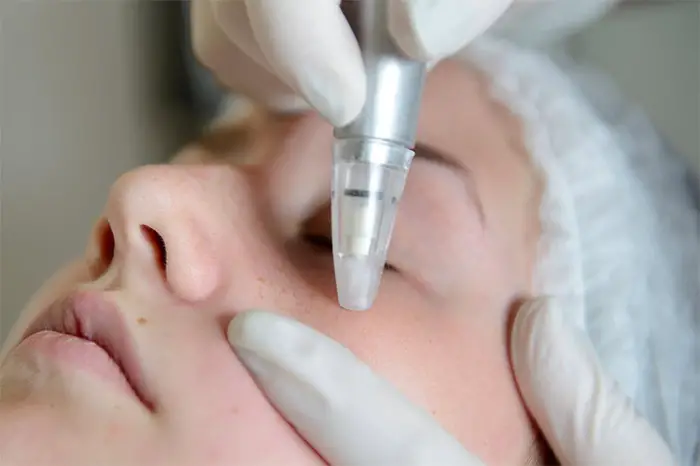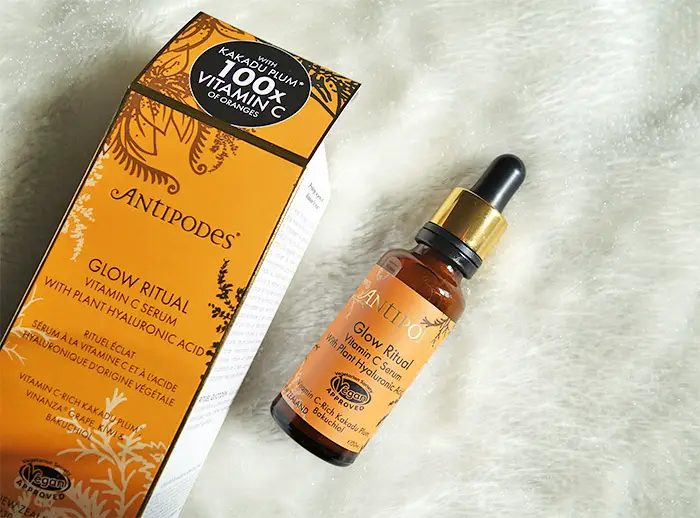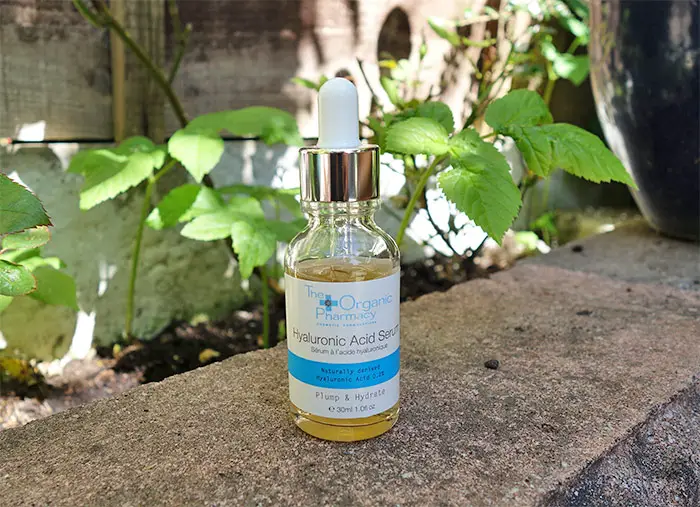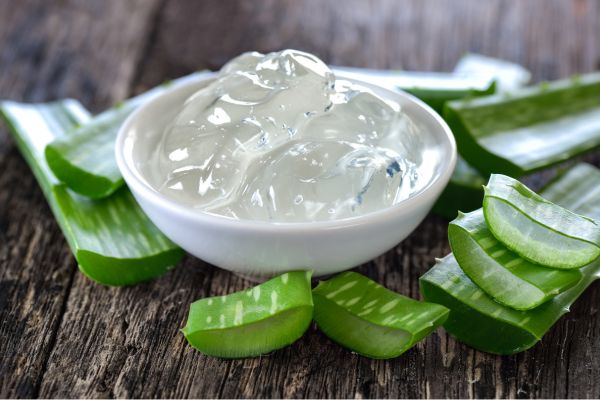
Microdermabrasion is a gentle in-clinic exfoliation technique designed to improve skin texture and tone. By using a specialized applicator tipped with fine crystals, it carefully removes the outer layer of the skin, revealing a brighter and more youthful appearance beneath.
Despite its non-invasive nature, choosing the right skincare products after the treatment is essential to avoid unnecessary skin irritation. So what should you put on your face after microdermabrasion? Natural oils like rosehip or coconut oil? Or is it better to consider the benefits of hyaluronic acid, witch hazel or aloe vera?
This article guides you through the best ingredients for post-microdermabrasion care and those to avoid, ensuring your skin stays healthy and vibrant.
Table of Contents
- What to Expect After Microdermabrasion
- How to Protect Your Skin After Microdermabrasion
- What to Avoid After Microdermabrasion
- Beneficial Ingredients After Microdermabrasion
- Ingredients to Avoid After Microdermabrasion
- Conclusion
What to Expect After Microdermabrasion
Following microdermabrasion, it’s common to notice some immediate changes as your skin begins to heal:
- Skin Sensitivity: Your skin may appear pink and feel a bit sensitive due to the treatment’s friction. This is normal.
- Temporary Redness and Dryness: Any redness typically fades within 24 hours. Your skin might also feel dry and tight, but this sensation should also pass within a day.
- Possible Whiteheads: Some individuals may notice whiteheads developing.
- Rare Crusting: On occasion, crusting (dried blood over irritated areas) might occur.
- Sensitivity to Temperature: The treated skin can be more sensitive to extreme temperatures, so avoid very hot or cold environments.
This means you will need to take special care of your skin during the days that follow your treatment to limit irritations as much as possible.
How to Protect Your Skin After Microdermabrasion
After microdermabrasion, your skin will be red and tender, highlighting the need for careful attention to protect and nourish the new, sensitive skin layer. Here’s what to prioritize:
- Hydrate Thoroughly: Your skin is exceptionally thirsty post-treatment. Quench it with moisturizers rich in hyaluronic acid, peptides, ceramides, and aloe vera to lock in moisture, soothe, and repair the skin barrier.
- Shield from the Sun: Newly exposed skin is vulnerable to UV damage. Limit sun exposure, wear a hat, and diligently apply sunscreen every two hours to safeguard your skin’s delicate state and preserve the treatment’s results.
- Embrace Gentle Care: Skip the harsh products. Use mild, soothing cleansers and skincare items free from fragrances and alcohol to avoid irritation and support the healing process.
What to Avoid After Microdermabrasion
Following microdermabrasion, your skin needs gentle care to heal properly, typically within two weeks. Here’s what to avoid during this critical period:
- Skip Strong Actives: Keep your skin free from irritation by avoiding strong skincare actives such as chemical exfoliants and acne treatments for the first 3 to 10 days. While it’s okay to reintroduce vitamin C serum after 48 hours, prioritize gentle, fragrance-free skincare to avoid rubbing or aggravating your skin.
- Hold off exercising: Give your skin a break from sweat-inducing activities for a few days. This means putting off swimming, gym workouts, running, and boxing to prevent sweat from irritating your sensitive skin.
- Avoid Touching or Aggravating Your Face: Minimize direct contact with your face to prevent bacteria transfer and irritation. Avoid facial waxing, steaming, using depilatory creams, or undergoing any laser treatments for at least two weeks to allow your skin to heal undisturbed.
Beneficial Ingredients After Microdermabrasion
Vitamin C Serum
Vitamin C, known for its antioxidant properties, protects the skin from UV radiation and boosts collagen production. It’s effective for speeding up the healing process after microdermabrasion. However, its acidic nature means it’s best to wait 48 hours before applying to avoid irritating the newly sensitized skin.

Hyaluronic Acid
Hyaluronic acid is beneficial to apply after microdermabrasion because it deeply hydrates the skin. Known for holding up to 1000 times its weight in water, it ensures the skin remains moist and plump. Additionally, its anti-inflammatory qualities and ability to stimulate collagen production make it ideal for promoting skin healing and reducing recovery time post-treatment.

Aloe Vera
Aloe vera gel is a very soothing and hydrating plant extract that will be ideal to apply to your skin after a microdermabrasion treatment. It has anti-inflammatory properties and is loaded with antioxidants vitamins A, C, and E that help soothe any inflammations and redness present after your treatment. Its hydrating and anti-inflammatory properties have been shown to improve skin healing.

Facial Oils
Facial oils, particularly rosehip oil, nourish the skin with essential fatty acids, antioxidants, and vitamins A and E. These ingredients work together to strengthen the skin barrier and accelerate healing, making them beneficial after microdermabrasion.
Witch Hazel
Witch hazel is best applied after microdermabrasion for those with combination or oily/acne-prone skin, thanks to its astringent properties that minimize pores and control oil. Its antibacterial and anti-inflammatory benefits help prevent infections and reduce irritation, while antioxidant properties provide potential skin protection.
However, its drying effect means it should be used with caution and sparingly, particularly avoiding use on dry or sensitive skin types to prevent over-drying.
Ceramides
Ceramides are highly recommended after microdermabrasion for their crucial role in reinforcing the skin’s barrier. They prevent moisture loss and shield the skin from environmental damage, ensuring hydration and integrity are maintained during the recovery phase.
Peptides
Peptides are beneficial following microdermabrasion due to their ability to prompt collagen production. These small amino acid chains are vital for skin repair and rejuvenation, making them an excellent addition to post-treatment care to accelerate healing.
Ingredients to Avoid After Microdermabrasion
Coconut Oil
Using coconut oil on your face after microdermabrasion is not recommended. Despite its antibacterial and moisturizing benefits, coconut oil’s high comedogenic rating means it’s likely to clog pores, potentially leading to breakouts, particularly for those with acne-prone skin. This risk makes it unsuitable for post-treatment care where the skin is more vulnerable and requires non-comedogenic products to ensure a smooth recovery.
AHAs
After microdermabrasion, it’s advisable to avoid alpha hydroxy acids (AHAs) like glycolic and lactic acids for at least 10 days to 2 weeks. These chemical exfoliants can overly exfoliate the skin, risking irritation and hyperpigmentation.
Given that microdermabrasion itself is a form of physical exfoliation, applying AHAs to freshly treated skin could cause discomfort or even burns. To ensure your skin barrier remains healthy and strong, it’s best to hold off on using your regular AHA products until your skin has adequately recovered.
BHAs
Similar to AHAs, beta hydroxy acids (BHAs) such as salicylic acid are not recommended for use on the skin for up to 10 days following a microdermabrasion treatment. Despite being gentler than AHAs, BHAs can still over-exfoliate and irritate the skin, which is especially sensitive post-treatment. To avoid compromising your skin’s recovery, it’s best to delay reintroducing BHA products until your skin has had sufficient time to heal.
Retinoids
Retinoids, including retinol and prescription formulas, should be avoided post-microdermabrasion. These powerful ingredients accelerate skin cell turnover, which can be too intense for freshly exfoliated skin, increasing the risk of irritation, redness, and sensitivity. It’s wise to wait at least 10 days before resuming retinoid use.
Fragrances and Essential Oils
Fragrances and essential oils, even in products marketed as natural, can irritate sensitized skin after microdermabrasion. Their potential to cause allergic reactions or dermatitis is heightened on vulnerable skin. Opt for fragrance-free products as your skin heals.
Alcohol-Based Products
Alcohol-based toners and skincare products can strip the skin of moisture and exacerbate dryness and irritation on post-microdermabrasion skin. Avoid these to maintain your skin’s hydration levels and support its recovery process.
Conclusion
In wrapping up, picking the right skincare after microdermabrasion is key to keeping your skin happy and healthy. Remember to avoid powerful actives right away and instead focus on nurturing and protecting your healing skin. Hydrate, shield from the sun, and treat your skin gently. With patience and the right care, you’ll soon enjoy the glowing benefits of your treatment. Take it slow, and let your skin’s natural radiance come through.

Petra Nakashian (previously Kravos) is a dedicated natural health and beauty blogger, driven by the loss of her parents to cancer, which led her to meticulously research beauty product ingredients. With over 10 years of experience, her in-depth knowledge has made her a trusted expert in the field. Founder of Be Healthy Now and Green Beauty Talk, Petra recently expanded her expertise with Beauty Insights Hub, exploring a wider range of beauty treatments. Committed to transparency and honesty, her work is a vital resource for navigating the complex world of beauty.
